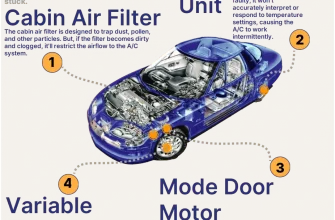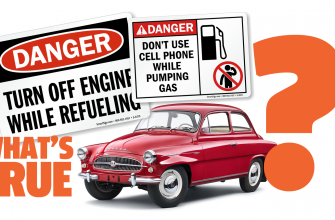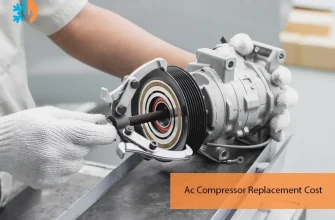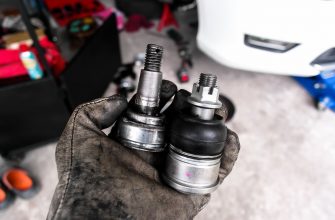In the intricate world of automotive mechanics, one issue stands out for its potential to wreak havoc on an engine’s performance: the burnt valve. Understanding the causes of burnt valves and exploring effective solutions can save car owners both time and money. Let’s dive into the details.
What is a Burnt Valve?
A burnt valve occurs when the sealing surface of a valve, typically found in the combustion chamber of an internal combustion engine, becomes damaged due to excessive heat. This heat can lead to warping, pitting, or complete failure of the valve, compromising the engine’s ability to maintain optimal performance.
Causes of Burnt Valves
- Overheating: One of the primary causes of burnt valves is overheating. When the engine temperature rises beyond normal limits, it can cause the valve to become excessively hot, leading to damage.
- Lean Fuel Mixture: A lean air-fuel mixture—where there is too much air and not enough fuel—can increase combustion temperatures, resulting in burnt valves. This condition is often caused by a malfunctioning fuel injector or a clogged fuel filter.
- Detonation: Also known as engine knock, detonation is an abnormal combustion event that occurs when the air-fuel mixture ignites prematurely. This can create extreme pressure and heat, damaging the valves.
- Improper Valve Clearance: If the clearance between the valve and its seat is not correctly set, it can lead to excessive wear and potential burning of the valve. This is often a result of improper engine assembly or maintenance.
- Poor Quality Fuel: Using low-quality fuel can lead to incomplete combustion and higher combustion temperatures, which may contribute to burnt valves over time.
Symptoms of a Burnt Valve
Identifying a burnt valve early is crucial to preventing further engine damage. Common symptoms include:
- Rough Idling: The engine may idle unevenly or feel shaky.
- Loss of Power: You might notice a significant drop in power, especially during acceleration.
- Excessive Exhaust Smoke: A burnt valve can cause oil to enter the combustion chamber, resulting in blue or gray smoke from the exhaust.
- Increased Fuel Consumption: If the engine is not running efficiently due to a burnt valve, you may experience higher fuel consumption.
Solutions for Burnt Valves
Once a burnt valve is diagnosed, there are several approaches to address the issue:
- Valve Replacement: The most straightforward solution is to replace the burnt valve. This process involves disassembling the engine, removing the damaged valve, and installing a new one.
- Resurfacing the Valve Seat: If the valve seat is damaged but not beyond repair, resurfacing it can restore a proper seal, allowing the engine to function correctly again.
- Adjusting Valve Clearance: Ensuring that the valve clearance is set correctly can help prevent future issues. Regular maintenance checks can help catch these problems early.
- Using Quality Fuel: Switching to a higher-quality fuel can reduce the likelihood of combustion issues that lead to burnt valves.
- Regular Engine Maintenance: Routine checks and maintenance of the cooling system, fuel system, and ignition system can help prevent the conditions that lead to burnt valves.
A burnt valve can be a serious issue with potentially costly consequences. Understanding the causes and symptoms of burnt valves is essential for any car owner. By taking proactive measures, such as regular engine maintenance and using quality fuel, you can help mitigate the risk of this damaging condition. If you suspect a burnt valve, it’s crucial to seek assistance from a professional mechanic to ensure your vehicle remains in optimal condition.
Prevention is always better than cure—stay informed and keep your engine running smoothly!
As we delve deeper into the world of automotive maintenance, it becomes evident that recognizing the symptoms of mechanical failures is just as crucial as understanding their origins. A burnt valve, for instance, is not merely an inconvenience—it can signal broader issues within an engine that, if left unchecked, may lead to catastrophic failure. Here, we explore not just the causes and solutions, but also preventative measures that every car owner should consider.
Preventative Measures to Avoid Burnt Valves
While knowing how to address burnt valves is important, preventing them from occurring in the first place is even more vital. Here are some strategies to keep your engine healthy:
- Regular Maintenance: Schedule routine check-ups with a qualified mechanic to monitor your engine’s health. This includes checking the cooling system, oil levels, and overall engine performance.
- Monitor Engine Temperature: Always keep an eye on your vehicle’s temperature gauge. If it frequently runs hot, it may be time to investigate potential coolant leaks or a failing thermostat.
- Fuel Quality Awareness: Invest in high-quality fuel that meets your engine’s requirements. Avoid using fuel with excessive ethanol content, which can lead to combustion issues.
- Timely Oil Changes: Regular oil changes are essential for lubricating engine components and regulating temperature. Use oil that meets or exceeds the manufacturer’s specifications.
- Check Emission Systems: Ensure that your vehicle’s emission systems are functioning properly. Faulty systems can contribute to a lean fuel mixture, which increases the risk of burnt valves.
When to Seek Professional Help
Even with the best preventative measures, issues can still arise. If you suspect that your vehicle may have a burnt valve, it’s crucial to seek professional assistance promptly. Here are signs that indicate it’s time to visit a mechanic:
- Persistent Engine Warning Lights: If the check engine light remains illuminated, don’t ignore it. A diagnostic test can help pinpoint the problem.
- Unusual Engine Noises: Hearing popping, tapping, or knocking sounds can indicate serious issues, including burnt valves.
- Difficulty Starting: If your engine struggles to turn over or takes longer than usual to start, it may be a sign of underlying problems.
- Visible Exhaust Issues: Smoke, particularly blue or gray, can indicate oil burning due to a damaged valve.
Understanding burnt valves—what causes them, how to identify them, and strategies for prevention—empowers car owners to maintain their vehicles effectively. Regular maintenance, keen observation of symptoms, and a proactive approach can significantly reduce the risk of experiencing this frustrating issue. Remember, a well-cared-for engine not only prolongs the life of your vehicle but also enhances your driving experience. So, take charge of your engine’s health today and ensure that you’re not left stranded by the side of the road with a burnt valve!
In the end, knowledge is not just power; it’s a pathway to smoother rides and fewer headaches on your journey ahead.









I really appreciated the detailed information about how burnt valves can affect engine performance. It’s a topic that many overlook until it’s too late. Well written!
This article provides a clear and concise explanation of burnt valves. The breakdown of causes and symptoms is particularly helpful for car owners. Great read!
Fantastic article! The section on the causes of burnt valves was very informative. I learned a lot about how to prevent this issue in my own vehicle.
This piece is incredibly insightful! Understanding burnt valves and their symptoms can really help in maintaining engine health. Thank you for sharing this knowledge!
Great job on this article! It’s well-researched and easy to understand, making it accessible for anyone looking to learn more about automotive issues.
I found this article to be extremely useful. The tips on recognizing the symptoms of a burnt valve could save car owners from costly repairs down the line.